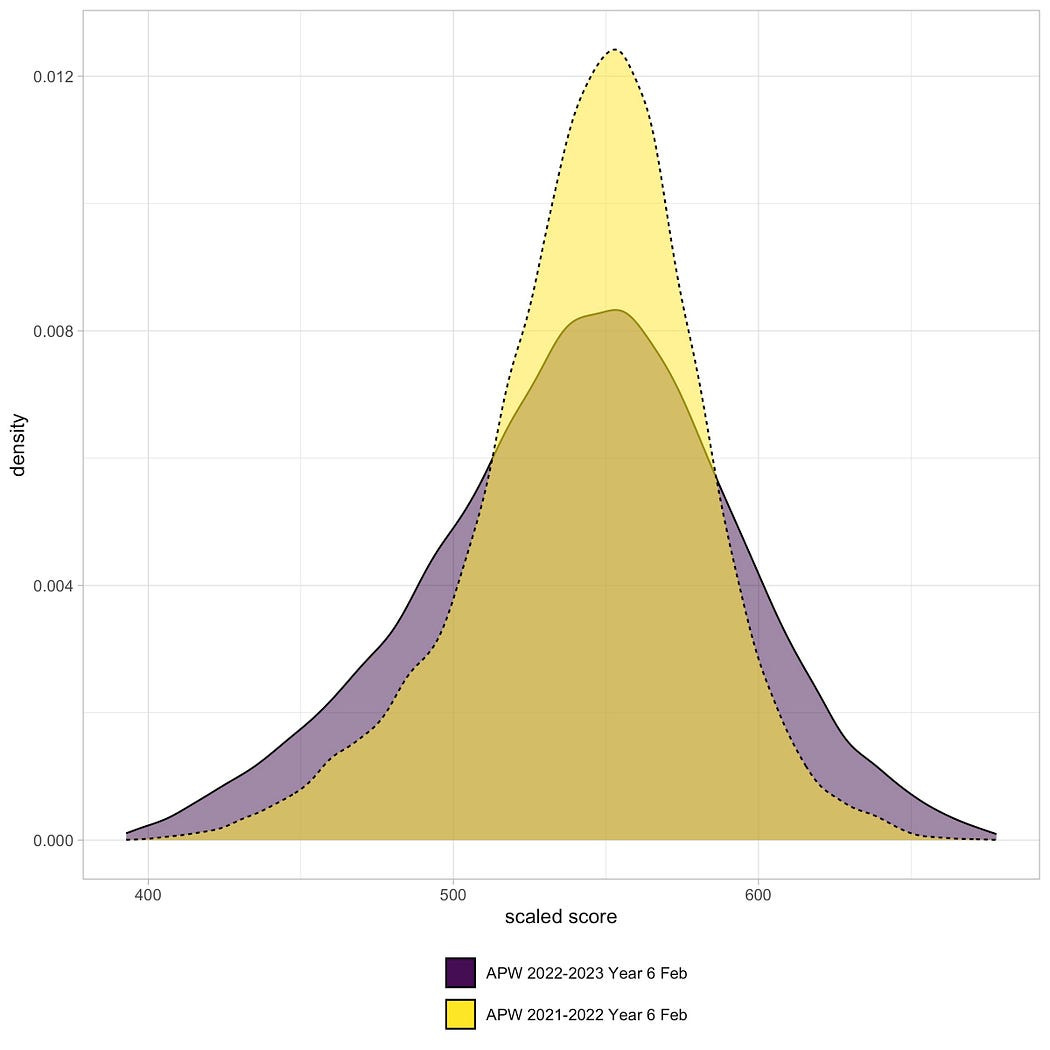Why is the attainment gap increasing?
Weaker students are struggling - but stronger students are thriving
Over the last academic year, we’ve assessed the writing of nearly 400,000 students from ages 5 - 14 using Comparative Judgement.
One of the most persistent findings is that in this academic year, the spread of attainment has increased.
We’ve seen this pattern in every single year group apart from year 5. Here’s a characteristic example of it, comparing the performance of Year 6s in February 2022 with Year 6s in February 2023.
What these two graphs demonstrate really well is that this increase in spread is not just due to weaker students getting weaker. It’s due to stronger students getting stronger. The purple chunk on the right-hand side of the chart shows high-attaining Year 6s who are doing better than high-attaining Year 6s the year before. But the purple chunk on the left shows the low-attaining Year 6s who are doing worse than the low-attaining Year 6s the year before.
And, just to show it isn’t a fluke, here’s another example from Year 7 showing a very similar pattern.
It’s also a pattern we have only really seen this year. We saw fluctuations in average scores throughout the pandemic, but not big increases in spread like this.
For more data about this phenomenon, see here. In the rest of this post, we’ll consider the reasons for this change.
So what is the cause?
We know that absenteeism is a growing problem, with lots of children missing school, so that may be a factor in the weaker performance.
But any explanation also has to take into account the improved performance at the top end, and this is where things start to get controversial. We’ve spoken to a lot of our schools about this, and no one clear answer emerges. Here are some of the suggestions we’ve heard.
If weaker students are missing school and falling behind, how does that lead to stronger students doing better? If weaker students are absent from school, does that mean stronger students get more attention and do better?
There has been extensive government funding for one-to-one and small group tuition since the pandemic. Has this helped higher-attaining students but not lower-attaining ones?
Have stronger students been given more parental and tutoring support since the pandemic?
Is the whole thing some kind of delayed post-pandemic reaction - school closures were bad for some pupils in the long run but good for others?
We don’t know, but we’ll continue with our assessments next year and extend them into Years 10 & 11, which we hope will give us more insights.




You probably saw this but posting just in case https://twitter.com/rmegal/status/1675515120988966913